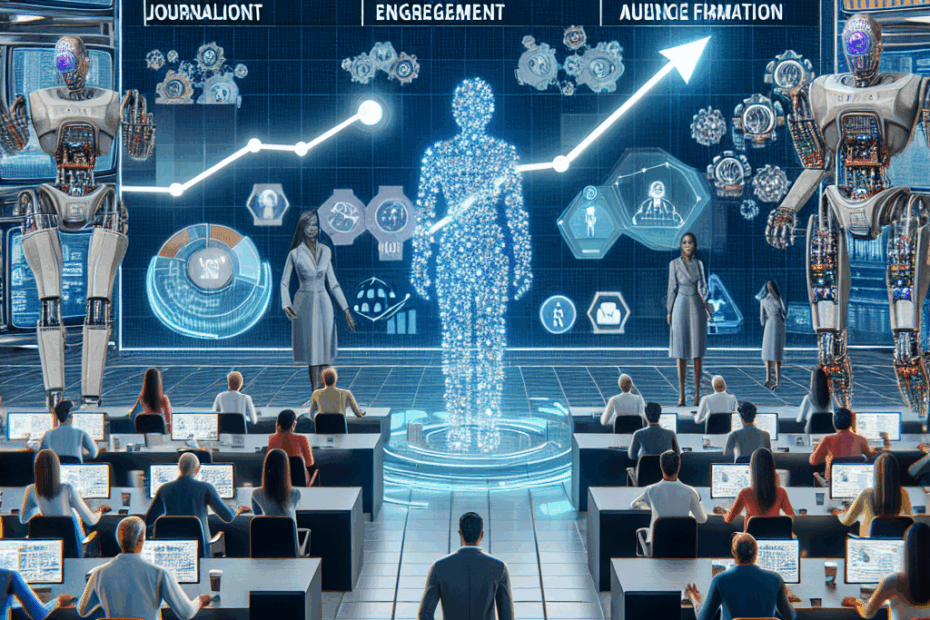“`html
AI to the Rescue: Helping News Companies Understand You Better!
Hey everyone, John here! Today, we’re diving into how a new type of AI, called Generative AI (GenAI), is helping news companies do a better job of understanding what their audience – that’s you and me – really wants. Sounds interesting, right?
The Problem: Knowing What Readers Want is Tough!
For years, news companies have struggled to truly understand what stories people want to read, what format they prefer (short articles, videos, podcasts?), and how they like to receive their news (email, social media, app notifications?). It’s like trying to guess what someone wants for their birthday without any clues!
Lila: John, what does “audience segmentation” mean? It sounds complicated!
John: Good question, Lila! “Audience segmentation” simply means dividing a large group of people (the audience) into smaller groups based on things they have in common, like their age, interests, or reading habits. It’s like sorting a box of toys into different piles: cars, dolls, and building blocks. News companies can then tailor their content to better suit each group.
GenAI to the Rescue: Understanding You with AI
That’s where GenAI comes in. Think of GenAI as a super-smart assistant that can analyze tons of information and find patterns that humans might miss. It can help news companies:
- Understand audience preferences: Figure out what topics are most popular and what kind of content people enjoy.
- Personalize news delivery: Send you the news you’re most likely to be interested in, in the format you prefer. Imagine getting a daily news digest tailored just for you!
- Improve engagement: Make news more interactive and engaging, so you’re more likely to read and share it.
How Does GenAI Do It? A Few Examples
The article I read outlined several ways news companies are using GenAI to better connect with their audiences. Here are a few key examples:
1. Creating Content That Resonates
GenAI can help journalists write headlines that grab attention and write summaries that accurately reflect the article’s content. It’s like having a writing assistant that helps you make your points clear and concise.
Lila: What’s an “A/B test” in this context, John?
John: Another great question, Lila! An “A/B test” is like a science experiment for websites and apps. You show two different versions of something (like a headline) to different groups of people, and then see which version performs better. For example, a news company might test two different headlines for the same article to see which one gets more clicks. It’s a way to figure out what people respond to best.
2. Tailoring News to Individual Interests
Imagine a news app that learns what topics you’re interested in (sports, politics, cooking) and then shows you more articles on those topics. That’s the power of personalization! GenAI can analyze your reading history and other data to create a personalized news experience.
3. Responding to User Feedback
GenAI can also help news companies understand what people are saying about their articles on social media and in the comments sections. This feedback can be used to improve future articles and address concerns.
Real-World Examples of GenAI in Action
The original article mentioned specific initiatives where news organizations are actively experimenting with GenAI. They are:
- Using AI to suggest article topics based on trending news and audience interests.
- Employing AI-powered tools to summarize lengthy articles, providing readers with concise overviews.
- Developing personalized news feeds that adapt to individual reading preferences.
- Automating the creation of different versions of the same story, tailored for different platforms (e.g., a short version for social media, a longer version for the website).
The Future of News: More Personalized and Engaging?
It’s exciting to think about how GenAI could transform the news industry. Imagine a future where news is more relevant, engaging, and personalized than ever before. It could even help combat the spread of misinformation by ensuring that people are exposed to a wider range of perspectives.
Lila: This all sounds great, but could there be any downsides to using AI in news?
John: That’s a really important point, Lila. There are definitely some things to consider. One concern is that if AI is only showing us news that it thinks we’ll agree with, we might end up in an “echo chamber” where we’re not exposed to different viewpoints. Another concern is ensuring that the AI is fair and doesn’t discriminate against certain groups of people. It’s important for news companies to use AI responsibly and ethically.
John’s Takeaway
I think GenAI has the potential to revolutionize how we consume news, making it more relevant and accessible. However, it’s crucial to address the ethical considerations and ensure that AI is used responsibly to promote a well-informed and engaged citizenry.
Lila’s Perspective: I’m still learning about AI, but it seems like it could be a really powerful tool for news companies. I hope they use it to make news better for everyone!
This article is based on the following original source, summarized from the author’s perspective:
GenAI helps news companies better respond to their
audience
“`
